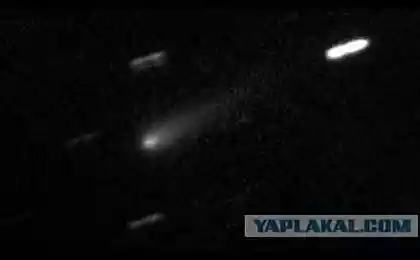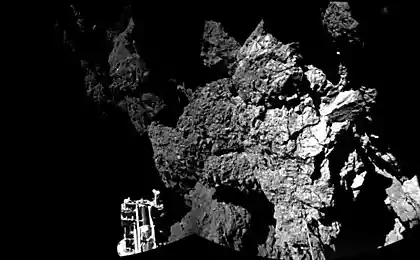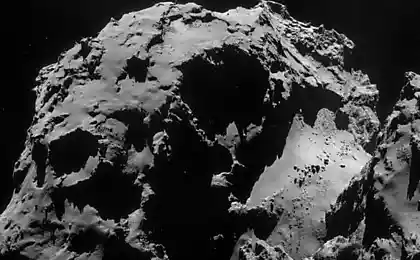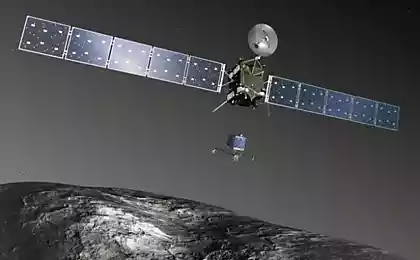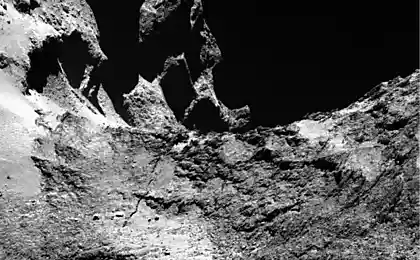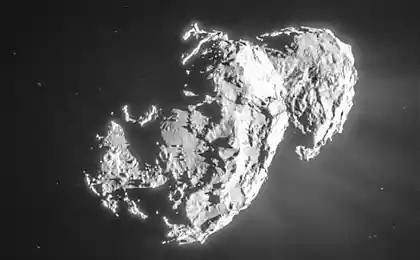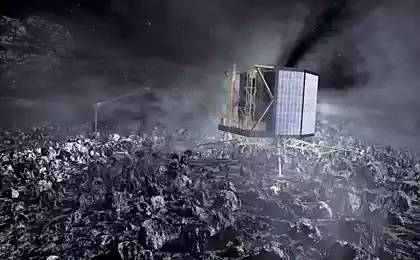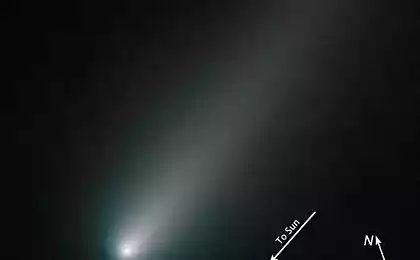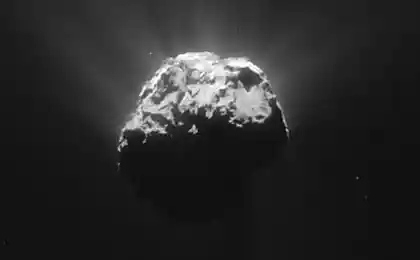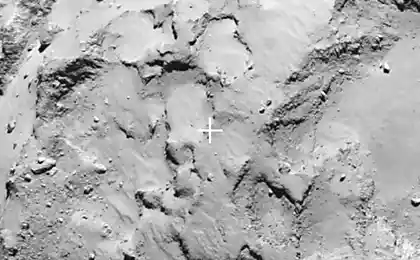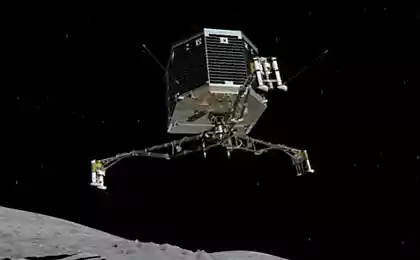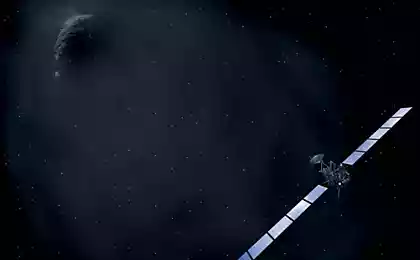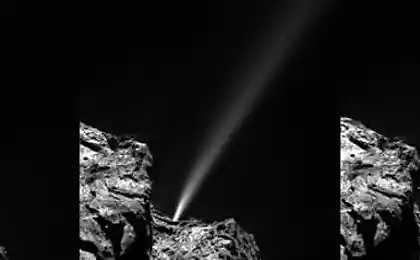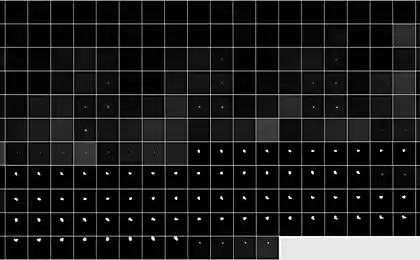The mission of "Rosetta": what to expect interplanetary station and probe Philae in the near future?

As you know, now probe Philae performed about 80-90% of the scientific objectives of the specialists, and went into a deep "sleep" due to lack of energy. Probe landing on a comet has gone according to plan, and now its solar panels are in the shade, so he does not get nearly probe the energy required for the job.
In fact, scientists are still not exactly can specify the current location of the probe, even though they know in what area is about Philae. In order to study the location of the probe used photographs taken by the probe station Rosetta and data tools CONSERT, to calculate the "maturation" of the device by means of triangulation.

Once scientists discover probe will become clearer as you can resume work Philae. Whatever it was, the chances for the resumption of the probe is very high. Comet approaches the Sun, changes its position relative to the light on the comet Churyumov-Gerasimenko will come soon "summer". With high probability we can say that the sun's rays will fall directly on the solar cells of the probe, and the latter will receive the right amount of energy to operate. Before you shut down Philae, scientists were able to turn the probe 35 degrees, oriented the battery directly at the light source.
Now, all that can be done - it's coming. "I am confident that we re-establish contact with the Philae and will be able to use scientific instruments," - said the head of the mission «Rosetta» Stefan Ulamek.
Of course, with a 100% chance to be sure to return the probe to life is impossible, but the probability of resumption of work is quite high. "In this case, we should be optimistic," - so commented Stefan.

Illustration showing a possible position of the probe at the moment i>
Preliminary results
Despite landing a triple probe and its current "dream», Philae did almost everything that had. He glared, "sniffed", "listening" and even rattle a comet. 60 hours was able to do very much, and all the data obtained were transferred to Earth, where they are analyzed, scientists now.
Preliminary results indicate that the comet organic molecules found. Scientists are going to study in detail all traces of organic compounds, as this will help to understand how and in what quantity organic compounds fell on the planet at the very beginning of its history (we are not talking about the discovery of traces of life or something like that, I remind you that the usual alcohol - it is also an organic compound). Learn more about organic compounds in space very well written Zelenyikot .
One of the tools of the probe was able to penetrate the soil comet's nucleus. It turned out that under the surface layer - another layer, surprisingly hard (it most likely ice). Phila also measured the mechanical vibrations that emerged during the first touchdown (then was made a touchdown and audio). Analysis of the records also confirmed that under the surface layer is a soft solid ice surface.
Unfortunately, it is not clear whether the probe turned to drill the surface of a comet, or not. Tweet professionals who were responsible for drilling, indicated that the furnace, which was supposed to get the sample was heated, but there are no results. This probably indicates that the sample was not obtained borer.
COSAC PI: Drill tried to deliver sample. Ovens heated up. But data show no actual delivery. «There's nothing in it.» #CometLanding - Eric Hand (erichand) 17 November 2014 blockquote>
Unfortunately, harpoons, too, did not work, so do not get started and thermometers with accelerometers located at the ends of harpoons.
Change observing the comet's nucleus
In the days prior to the landing of the probe on the surface of the comet Churyumov-Gerasimenko, Rosetta space probe performed mainly support functions of the probe. This delivery of the probe to the comet, the study of the landing site, the comet's nucleus photos, watching landing probe. Now began the real scientific mission and Rosetta.
So, December 3, the station should enter the 20-kilometer orbit. Rosetta will remain in this orbit for a long time, watching the changes in the kernel as it approaches the sun. In August comet comes closer to the sun as much as possible. Ice begins to melt, sublimating into gas, leaving a space. In the comet will appear bright and long "tail", leaving the opposite side from the Sun under the pressure of the solar wind.
And all of this Rosetta will see and record.

Previously, various devices have already approached with comets (all were visited 7 different comets). But the mission to comet Churyumov-Gerasimenko is unique, it is the most detailed study of a comet in history.
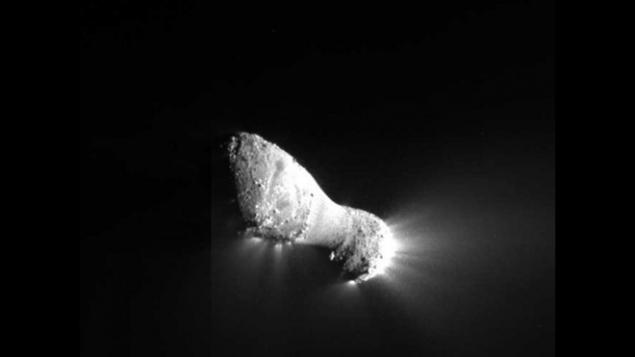
EPOXI mission from NASA has brought a lot of information about comets, namely the comet Hartley 2. Picture taken from a distance of 700 kilometers
Rosetta will analyze the dynamics of the size and shape of the nucleus of the comet during the approach to the sun. Perhaps this time the comet will be divided into two parts because "isthmus" between the two parts of the kernel is not so big.
The station will accompany the comet until December 2015. Scientists are pinning their hopes on the operation of the plant and in 2016. But this will depend already on how to behave Churyumov Gerasimenko comet itself. May extend from the core particles that can damage the plant. Yes, and the station itself is already quite "old" - in fact it 10 years! However, the state of the plant is assessed as "excellent".
Future missions
Well, landing on a comet passed, we can say, well. Access to the orbit of the comet also went well. What's next? Who speaks several proposals for future missions. One of them - to send one of the most promising in terms of learning comets probe capable of moving from place to place in the nucleus. The goal - the study of types of nuclear surface. The project is one of the missions is called - Comet Hopper.

Photo of Comet Tempel 1 taken after 67 seconds after the impact of the module on the Deep Impact comet
Scientists would like to send to one of the comets machine that could return with samples of the substance of the nucleus of the comet. It is much more difficult than the Rosetta mission, which in itself was extremely complex in terms of implementation. One of the challenges facing researchers - to build a cryogenic capsule which will bring chilled substance of the comet (or rather, to maintain the normal temperature for deep space comet substance). Do it, overcoming the Earth's atmosphere while returning almost unbelievable.
Future missions are very important and very necessary. Despite the fact that the mission "Rosetta" answers to many questions, based on research findings emerged even more questions.
But while the show goes on, and we all follow the interplanetary station and its work.
Via wired
Source: geektimes.ru/post/242008/





